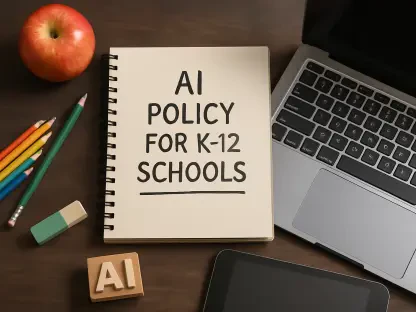In a landscape where educational opportunities often hinge on family income and geographic location, a groundbreaking provision in a recently passed federal bill has sparked both hope and debate among educators, parents, and policymakers. Signed into law by President Trump, this legislation, dubbed the “One Big Beautiful Bill,” introduces a federal tax credit program designed to bolster private school scholarships through donations to scholarship-granting organizations (SGOs). Set to roll out in January 2027, this initiative promises to reshape K-12 education funding by empowering families with more choices, provided their states opt into the program. While the potential for broader access to private education is undeniable, the path forward is fraught with uncertainties about state participation and regulatory implications. This development raises critical questions about how such a policy could redefine school choice and what it means for the future of education across the nation.
Understanding the Federal Tax Credit Program
Mechanics of the New Scholarship Initiative
At the heart of this transformative policy lies a mechanism that allows eligible taxpayers to donate up to $1,700 annually to certified SGOs, receiving a dollar-for-dollar federal tax credit in return, adjusted for any state-level credits. These donations fuel scholarships for families earning up to 300% of the local median gross income, ensuring that students eligible for public school enrollment can access private education. The funds cover tuition and related expenses at a private school of the family’s choosing, offering a significant lifeline to those seeking alternatives to public systems. Notably, the program prohibits donors from directing funds to specific families, and parents cannot assign credits to their own children’s expenses. Instead, independent 501(c)(3) SGOs, unaffiliated with any particular school, oversee eligibility and distribution, aiming to maintain fairness and impartiality in the allocation process.
Scope and Limitations of the Tax Credit System
While the structure of the tax credit program appears promising, its scope hinges on several critical factors that could limit its reach. State participation stands as the primary barrier, as only students in states that opt into the program by 2027 will benefit from these scholarships. Without a cap on the number of participating families or total scholarship amounts, the potential for widespread impact exists, yet the absence of detailed federal regulations leaves many operational aspects unclear. Questions linger about recordkeeping, reporting requirements, and how SGOs will be certified at the state level. Additionally, the interaction between this federal initiative and existing state scholarship programs remains ambiguous, leaving families and schools uncertain about whether they must choose one funding source over another or if dual benefits are possible. This uncertainty underscores the need for clarity as the rollout date approaches.
Implications for K-12 Education and School Choice
Potential Benefits for Private Schools and Families
The introduction of this federal tax credit program could herald a new era for private and independent schools, particularly in states that choose to participate. An influx of scholarship funding may drive increased enrollment as more families gain access to financial support for tuition and educational expenses. For schools in regions lacking existing school choice programs, the establishment of eligible SGOs could open doors to previously untapped student populations, enhancing diversity and financial stability. Families stand to benefit from greater flexibility in selecting educational environments that align with their values and their children’s needs, potentially leveling the playing field in areas where public schools underperform. The absence of a limit on scholarship numbers suggests that the program could scale significantly, amplifying its impact on K-12 education if state participation is widespread and implementation is smooth.
Challenges and Uncertainties Facing Schools
Despite the potential upsides, significant challenges loom over the integration of this tax credit program into the existing educational framework. One pressing concern is whether accepting scholarship funds will classify as receiving federal financial assistance, which could subject private schools to compliance with federal regulations such as Title IX, Section 504 of the Rehabilitation Act, and the Family Educational Rights and Privacy Act (FERPA). Such obligations may impose administrative burdens that some institutions are ill-equipped to handle. Additionally, it remains unclear whether schools can opt out of the program even if their state participates, creating uncertainty about autonomy. The lack of guidance on how this federal initiative meshes with state-level programs further complicates the landscape, leaving schools to navigate a maze of potential conflicts and overlapping requirements as they prepare for the changes ahead.
Navigating the Road to Implementation
As the 2027 launch date nears, the need for comprehensive federal regulations becomes increasingly urgent to address the operational ambiguities surrounding the tax credit program. States, schools, and SGOs await details on enforcement, certification processes, and compliance expectations, which will shape the program’s effectiveness. Educational institutions are encouraged to monitor announcements from local officials regarding state participation decisions, as these will directly impact their ability to engage with the initiative. Proactive engagement with the evolving policy landscape is essential for schools to adapt to potential shifts in enrollment and regulatory demands. Legal counsel may also prove invaluable in interpreting forthcoming guidelines and ensuring readiness for any obligations tied to scholarship acceptance. The cautious optimism surrounding this policy reflects a shared recognition of its transformative potential, balanced against the practical hurdles that must be overcome for successful implementation.









